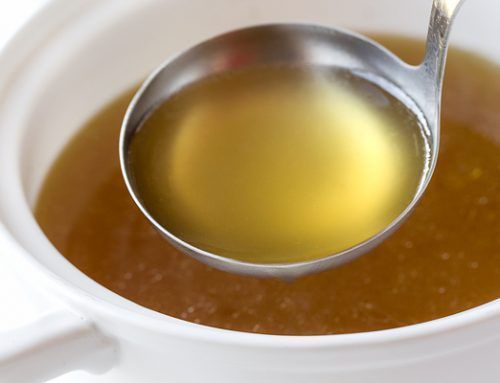Project Description
Perfect Chicken Stock
After serving the meal, I pick off the remaining meat, as much as possible, and reserve it for sandwiches or another dish. Next, I break the carcass into pieces and place them in a pot big enough to hold the carcass plus two finger widths of water. Breaking the bones does two things: it releases the marrow, which is where a lot of the flavor hides, and it exposes more of the bone to the calcium-extracting acid. Be sure to throw the necks, backs, gizzards and other innards into the pot as well.
Wash all the raw parts well under cold running water. Place everything into a 4-quart or larger pot and fill with COLD water to cover bones, plus 2 finger widths. Add a couple of tsp. of vinegar or lemon juice and let the brew sit for at least 30 minutes before placing on the stove. Do not go overboard on the acid or you will ruin the stock.
After 30 minutes, bring to boil over high heat. While waiting for the water to boil, prepare the vegetables. When the water just boils, add the vegetables to the pot and when the water returns to a boil, quickly reduce the heat and partially cover the pot. Adjust the heat to allow the stock to slowly simmer. (Sometimes I even move the pot halfway off the burner.)
If need be, skim off any foam that begins to form. This will leave you with a much clearer broth. When the foam is pretty much gone, sprinkle with a teaspoon of seasoned salt, and reduce heat to medium-low. You want just the barest hint of a simmer while the pot is covered.
Let simmer very gently, without stirring, for 3 to 4 hours—or even overnight. Let cool slightly and then remove the big bones and vegetable parts. Carefully pour the remaining liquid and small bones through a large, fine-meshed sieve, catching the liquid in another pot. Discard all bones and vegetables.
Cover and place your clear stock in the refrigerator 5-6 hours or overnight. In the winter, I put the stock out on my porch to cool. After several hours, all the fat will rise to the top and solidify. Chicken fat is rather soft so you should carefully skim it off with a spoon.
Now it is time to reduce the stock, which will give it more concentrated flavor and make a firmer gel. Boil the stock in an uncovered pot. Taste occasionally until you find the strength of stock you are looking for. I usually reduce mine at least by half.


Leave A Comment